Baseball gloves are an important piece of equipment to own when taking interest in baseball, and since they are not always the cheapest, making sure they fit is an important step to make before investing.
Like many fitting guides, there are more factors to consider which are often overlooked and this is what this guide is here to help you with.

The size of a baseball glove tends to be etched onto the leather of the glove, usually nearby where the thumb or the pinky finger will be. But just seeing the marking of the glove is not enough to know which size is best for you.
If you are buying in person, this is less of an issue since all you have to do is try the glove on, but if you are ordering online, you do not have this option. That’s where we come in. This article will guide you through the selection process, step-by-step.
There are also some sizes of baseball gloves that are better for different roles than others, this needs to be taken into consideration, and this is done in this guide.
So, if you are having trouble finding a baseball glove in a size that fits you, this guide is what you need to read!
How To Size A Baseball Glove?
Before you have even bought a baseball glove, you will need to know how a baseball glove is sized to ensure that you will get a perfect size.
If you are playing as a fielder or on first base, you will need to get a tape measure and measure from the tip of your index finger and then move this down over your palm onto the heel of this glove.
You must ensure the tape measure can fold in the pocket and down into the palm’s heel.
On the other hand, a catcher’s mitt is measured differently from a different glove since these gloves do not have fingers like the others.
The measurement for these will use the circumference of the glove instead to help get the catching area of the glove.
Because of this, the measurement method is much different, and the sizes of these gloves will tend to be much larger.
While a baseball glove will not be any larger than 12 and a half inches, a catcher’s mitt could get up to 32 to 34 inches.
How To Size A Baseball Glove For Kids
If you are looking for a youth baseball glove, these will tend to have a much smaller wrist opening and finger stalls, which will fit more tightly.
For an infield glove, these will be between 9 and 11.5 inches, and for a pitcher or an outfield glove, these will be between 10.5 and 12.5 inches.
We will put a guide next for different preferable sizes depending on age. However, consider if your child has larger or smaller hands than the average size for their age before purchasing.
A glove between 9 and 10 inches is best for a child younger than five.
For a child between six and seven, a glove between 10 and 10.5 inches will be best. If your child is between eight and ten, a glove between 10.75 and 11.5 is best.
And for 11 to 12, a glove between 11 and 12 inches is best.
Since children playing baseball do not tend to be limited to a certain position, the type of glove will not vary that much.
Because older children are much more likely to play in a set position, their gloves will tend to be larger, measuring between 12 and 12.5 inches.
Once you are happy with the glove which has been chosen, you will want to make sure to test how well it fits.
You will want to ensure that the hand can slide quickly into the glove, but also should not fall if the hand is pointed to the ground.
You want the glove to have a good snug fit, but of course, not too tight that it could be uncomfortable to the child wearing it.
While youth gloves for baseball can be pliable, this is not always the case as the leather can occasionally be too hard to be able to do this.
You will want to ensure that the glove is easy to open and close. This is why the process of breaking in the glove is important.
You should also avoid buying a bigger than necessary glove with the hopes of them growing into the bigger size.
This will make the glove very difficult to control, which could easily frustrate your child and make the glove a wasted purchase.
Baseball Glove Size By Position

You will need to make some specific considerations to find the correct baseball glove size.
These include the age you are, the hand size you have, and arguably most important, the field position you are playing in.
When it comes to the field position, you will need to make sure that the glove has the specific features needed for the demands of that specific position.
This section of the guide will cover what each position needs so you can buy a glove perfectly suited for your needs.
Outfield Baseball Glove Size
Outfielder gloves tend to be much larger compared to infielder gloves.
This is because an outfielder will need a more deep and larger pocket to get fly balls and ensure the ball can be kept under control once it has been caught.
| Product | Price | Buy | |
|---|---|---|---|
 Top Top | Franklin Sports Unisex Adult 12.5-Inch Franklin Sports Baseball Glove -Outfielder | BUY NOW | |
 Top Top | Rawlings Select Pro Lite Youth Baseball Outfielder Glove | BUY NOW |
For a youth outfielder glove, you should get between 10.75 to 12.5 inches, and for an adult, you should get between 12.5 to 12.75 inches.
Infield Baseball Glove Size
Infield baseball gloves will tend to be some of the smallest gloves available for baseball players. Because of this, they will have a much smaller and more shallow pocket.
This makes quicker ball transfer possible from the glove toward the base runners.
There are some incorrect assumptions that an infielder will need a larger glove, but this is proven wrong by the pros finding the best results with gloves going as small as 11.25 inches.
| Product | Price | Buy | |
|---|---|---|---|
 | WILSON Sporting Goods 2021 A2000 PP05 11.5" Infield Baseball Glove - Right Hand Throw | Buy Now | |
 | Rawlings Select Pro Lite Youth Baseball Glove, Black, 11.25 | Buy Now |
If you are looking for a youth baseball infield glove, it should be between 10.75 to 11.75 inches; for an older adult glove, you will want it to be between 11.25 to 12.25 inches.
Pitcher’s Glove Sizing
For the most part, pitchers will not need a specialized glove, this is because most of them will end up playing different positions on the field as well.
This means their glove should be able to double up as something else as well as a pitcher’s glove. Most pitcher’s gloves will have a closed web, this is to make it, so the player’s grip will be concealed from hitters before they have thrown.
| Product | Price | Buy | |
|---|---|---|---|
 | WILSON Sporting Goods 2021 A2000 CK22 Clayton Kershaw Game Model 11.75" Baseball Pitcher's Glove - Right Hand Throw | Buy Now | |
 | Rawlings SPL120BH-6/0 Select Pro Lite Youth Baseball Glove, Bryce Harper Model, Regular, Pro H Web, 12 Inch | Buy Now |
As well as this, they will need to be larger to make sure to hide a pitcher’s hand. When it comes to sizing they are similar to an infield glove.
Utility Glove Sizing
Suppose you are working with a more limited budget. In that case, you will not get a first baseman’s glove, as well as an infielder, as well as an outfielder’s glove, or if you just do not want to be carrying that many gloves around, this is when people will look for a multifunctional utility glove.
These are great if you are playing in different positions and need to be able to function both infield and outfield.
| Product | Price | Buy | |
|---|---|---|---|
 | Rawlings Select Pro Lite Youth Baseball Glove, Kris Bryant Model, Pro H Web, 11-1/2 Inch | Buy Now | |
 | Franklin Sports Baseball Fielding Glove - Men's Adult/Youth Baseball Glove - CTZ5000 Black Cowhide Infield Glove - 12" Basket Web Infielders, Pitchers, Black Chrome (22415) | Buy Now |
They tend to be larger than an infield glove and will be closely webbed to suit a pitcher. Their sizing varies much more than other types.
First Base Mitt Sizing
These require the ability to catch well, sometimes called first base mitts. They will be larger as well as longer as they will as not have separated fingers.
| Product | Price | Buy | |
|---|---|---|---|
 | Mizuno GXF102 Youth Prospect First Baseman Mitt, 12-Inch, Right Hand Throw | Buy Now | |
 | Wilson A2000 12.5-Inch SuperSkin Baseball Glove, Saddle Tan/Black, Right (Left Hand Throw) | Buy Now |
Catcher’s Mitt Sizing
Catchers use exclusively mitts, not gloves, and they are constructed not to have separately cut finger stalls. They will tend to be stiffer and need more time to break in.
| Product | Price | Buy | |
|---|---|---|---|
 | WILSON Sporting Goods 2021 A2000 Spin Control M1D 33.5" Baseball Catcher's Mitt - Right Hand Throw | Buy Now | |
 | Mizuno 311667.F981.21.3250 Prospect GXC105 Youth Catcher's Mitt (32.50-Inch, Left Handed Throw) | Buy Now |
They have closed pockets as well as extra padding. Furthermore, they are between 31 and 34 inches measure in circumference.
Takeaway
Hopefully, this guide has given you the information you need to ensure you get the correct glove for your size!
Read all the information for your position to make the most informed decision possible.
- Fenway Park Seating Chart: Best Seats To See the Red Sox - July 17, 2023
- What is RBI in Baseball: A Simple Explanation of The “Ribby” - July 3, 2023
- What is DFA in Baseball? A Term No Player Wants to Hear - July 3, 2023

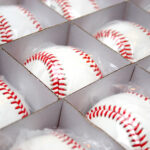
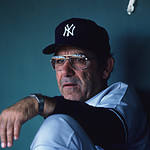
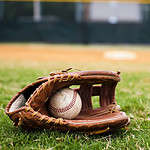
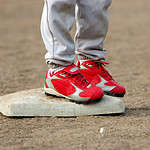
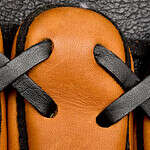
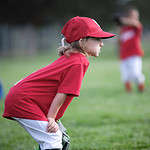
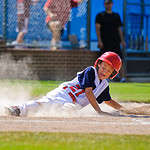
![All About Baseball Chants: The Complete Guide Everything You’ll Ever Need To Know About Baseball Chants [The Complete Guide]](https://travelbaseballcentral.com/wp-content/uploads/2022/09/Everything-Youll-Ever-Need-To-Know-About-Baseball-Chants-The-Complete-Guide.jpg)